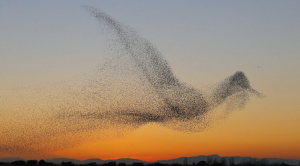We humans think that we are the only ones who are experts, well, in everything. What if I told you that there is a parrot species who can understand the probability or formally called statistic interference? Awesome, right?

Tests on six kea parrots (Nestor notabilis) have shown that they can understand and act on probabilities on cases that were previously tested on humans and apes.
These findings bring various facts to the limelight. The results help to understand how non-human brains work and how they tend to think more realistically. Also, this gives a full coherence of the artificial intelligence system of our own.
Plus, the results focus the attention on whether the human and non-human brain develop specific sections for specific tasks, aka domain-specific or, whether the same cognitive process goes with whatever the task which is required, aka domain-general.
“Our results show that kea exhibit three signatures of statistical inference, and therefore can integrate knowledge across different cognitive domains to flexibly adjust their predictions of sampling events,” the researchers write in their newly published study.
“This result provides evidence that true statistical inference is found outside of the great apes, and that aspects of domain-general thinking can convergently evolve in brains with a highly different structure from primates.”
Three experiments were done on six kea Loki, Neo, Bruce, Plankton, Taz, and Blofeld. These parrots were trained to be familiar with the colour black, which is with a reward, and the color orange with no reward.
First, the researchers fill the transparent jars with different levels of black and orange tokens. Then they would take out tokens from one or two jars in front of the parrots while hiding the token color and permitting the parrots to make a choice from a closed hand.
The preference among the kea was choosing the hand with the highest proportion of black token, which is with a reward.
Birds weren’t influenced by the number of black or orange tokens in total in jars because the jars were filled with equal number of tokens in relation to the colors. This was done in order to get an unbiased result from the parrots.
Also, when the physical barriers were set for jars and change of fractions of the reward tokens were made, the birds also changed their behavior accordingly.

So, as a result, the researchers could conclude that the birds show an advanced cognitive process when it comes to statistical inference, aka probabilities, in action.
However, the same cognitive level were measured when similar experiments were done on infants and apes, which proves that the parrots also have the same cognitive level.
Yet, we need more experiments to find out the brain process of animals. As there were birds before some million years ago, surely they must have evolved by now.
“This has important implications not only for our understanding of how intelligence evolves but also for research focused on how to create artificial domain-general thought processes,” conclude the researchers.
The research has been published in Nature Communications.
